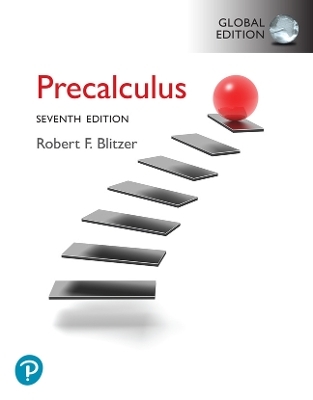
Design and Analysis of Experiments – Introduction oduction to Experiemtal Design, Second Edition
John Wiley & Sons Inc (Hersteller)
978-0-470-19175-0 (ISBN)
- Keine Verlagsinformationen verfügbar
- Artikel merken
This book is the first of two volumes that update Oscar Kempthorne's groundbreaking 1952 classic of the same name and is concerned primarily with the philosophical basis for experimental design and a mathematical statistical framework within which to discuss the subject. As the primary focus is on intervention studies, the authors begin with a thorough discussion of linear models. At the heart of the book is a series of error control designs based on fundamental design principles such as randomization, blocking, the Latin square principle, the split unit principle, and the notion of factorial treatment structure.
Klaus Hinkelmann, PhD, is Emeritus Professor of Statistics in the Department of Statistics at Virginia Polytechnic Institute and State University. A Fellow of the American Statistical Association and the American Association for the Advancement of Science, Dr. Hinkelmann has published extensively in the areas of design of experiments, statistical methods, and biometry. The late Oscar Kempthorne, ScD, was Emeritus Professor of Statistics and Emeritus Distinguished Professor of Liberal Arts and Sciences at Iowa State University. He was the recipient of many honors within the statistics profession.
1. The Processes of Science.1.1 Introduction.1.2 Development of Theory.1.3 The Nature and Role of Theory in Science.1.4 Varieties of Theory.1.5 The Problem of General Science.1.6 Causality.1.7 The Upshot.1.8 What Is An Experiment?.1.9 Statistical Inference.2. Principles of Experimental Design.2.1 Confirmatory and Exploratory Experiments.2.2 Steps of Designed Investigations.2.3 The Linear Model.2.4 Illustrating Individual Steps: Study 1.2.5 Three Principles of Experimental Design.2.6 The Statistical Triangle and Study 2.2.7 Planning the Experiment.2.8 Cooperation between Scientist and Statistician.2.9 General Principle of Inference.2.10 Other Considerations for Experimental Designs.3. Survey of Designs and Analyses.3.1 Introduction.3.2 Error Control Designs.3.3 Treatment Designs.3.4 Combining Ideas.3.5 Sampling Designs.3.6 Analysis and Statistical Software.3.7 Summary.4. Linear Model Theory.4.1 Introduction.4.2 Representation of Linear Models.4.3 Functional and Classificatory Linear Models.4.4 The Fitting Of Y .= X .4.5 The Moore Penrose Generalized Inverse.4.6 The Conditioned Linear Model.4.7 The Two Part Linear Model.4.8 A Special Case of a Partitioned Model.4.9 Three Part Models.4.10 The Two Way Classification Without Interaction.4.11 The K Part Linear Model.4.12 Balanced Classificatory Structures.4.13 Unbalanced Data Structures.4.14 Analysis of Covariance Model.4.15 From Data Analysis to Statistical Inference.4.16 The Simple Normal Stochastic Linear Model.4.17 Distribution Theory with GMNLM.4.18 Mixed Models.5. Randomization.5.1 Introduction.5.2 The Tea Tasting Lady.5.3 A Triangular Experiment.5.4 The Simple Arithmetical Experiment.5.5 Randomization Ideas for Intervention Experiments.5.6 The General Idea of the Experiment Randomization Test.5.7 Introduction to Subsequent.6. The Completely Randomized Design.6.1 Introduction and Definition.6.2 The Randomization Process.6.3 The Derived Linear Model.6.4 Analysis Of Variance.6.5 Statistical Tests.6.6 Approximating the Randomization Test.6.7 CRD with Unequal Numbers of Replications.6.8 Number of Replications.6.9 Subsampling In A CRD.6.10 Transformations.6.11 Examples Using SASR.7. Comparisons of Treatments.7.1 Introduction.7.2 Comparisons for Qualitative Treatments.7.3 Orthogonality and Orthogonal Comparisons.7.4 Comparisons for Quantitative Treatments.7.5 Multiple Comparison Procedures.7.6 Grouping Treatments.7.7 Examples Using SAS.8. Use of Supplementary Information.8.1 Introduction.8.2 Motivation of the Procedure.8.3 Analysis of Covariance Procedure.8.4 Treatment Comparisons.8.5 Violation of Assumptions.8.6 Analysis of Covariance with Subsampling.8.7 The Case of Several Covariates.8.8 Examples Using SASR.9. Randomized Block Designs.9.1 Introduction.9.2 Randomized Complete Block Design.9.3 Relative Efficiency of the RCBD.9.4 Analysis of Covariance.9.5 Missing Observations.9.6 Nonadditivity in the RCBD.9.7 The Generalized Randomized Block Design.9.8 Incomplete Block Designs.9.9 Systematic Block Designs.9.10 Examples Using SASR.10. Latin Square Type Designs.10.1 Introduction and Motivation.10.2 Latin Square Design.10.3 Replicated Latin Squares.10.4 Latin Rectangles.10.5 Incomplete Latin Squares.10.6 Orthogonal Latin Squares.10.7 Change Over Designs.10.8 Examples Using SAS.11. Factorial Experiments: Basic Ideas.11.1 Introduction.11.2 Inferences from Factorial Experiments.11.3 Experiments with Factors at Two Levels.11.4 The Interpretation of Effects and Interactions.11.5 Interactions: A Case Study.11.6 2n Factorials in Incomplete Blocks.11.7 Fractions of 2n Factorials.11.8 Orthogonal Main Effect Plans for 2n Factorials.11.9 Experiments with Factors at Three Levels.11.10experimentswith Factors at Two and Three Levels.11.11examples Using SAS.12. Response Surface Designs.12.1 Introduction.12.2 Formulation of the Problem.12.3 First Order Models and Designs.12.4 Second Order Models and Designs.12.5 Integrated Mean Squared Error Designs.12.6 Searching For an Optimum.12.7 Experiments with Mixtures.12.8 Examples Using SAS.13. Split Plot Type Designs.13.1 Introduction.13.2 The Simple Split Plot Design.13.3 Relative Efficiency of Split Plot Design.13.4 Other Forms of Split Plot Designs.13.5 Split Block Design.13.6 The Split Split Plot Design.13.7 Examples Using SAS.14. Designs with Repeated Measures.14.1 Introduction.14.2 Methods for Analyzing Repeated Measures Data.14.3 Examples Using SAS.14.4 Exercises.
| Erscheint lt. Verlag | 1.12.2007 |
|---|---|
| Verlagsort | New York |
| Sprache | englisch |
| Maße | 164 x 239 mm |
| Gewicht | 1056 g |
| Themenwelt | Mathematik / Informatik ► Mathematik |
| ISBN-10 | 0-470-19175-9 / 0470191759 |
| ISBN-13 | 978-0-470-19175-0 / 9780470191750 |
| Zustand | Neuware |
| Haben Sie eine Frage zum Produkt? |
aus dem Bereich
